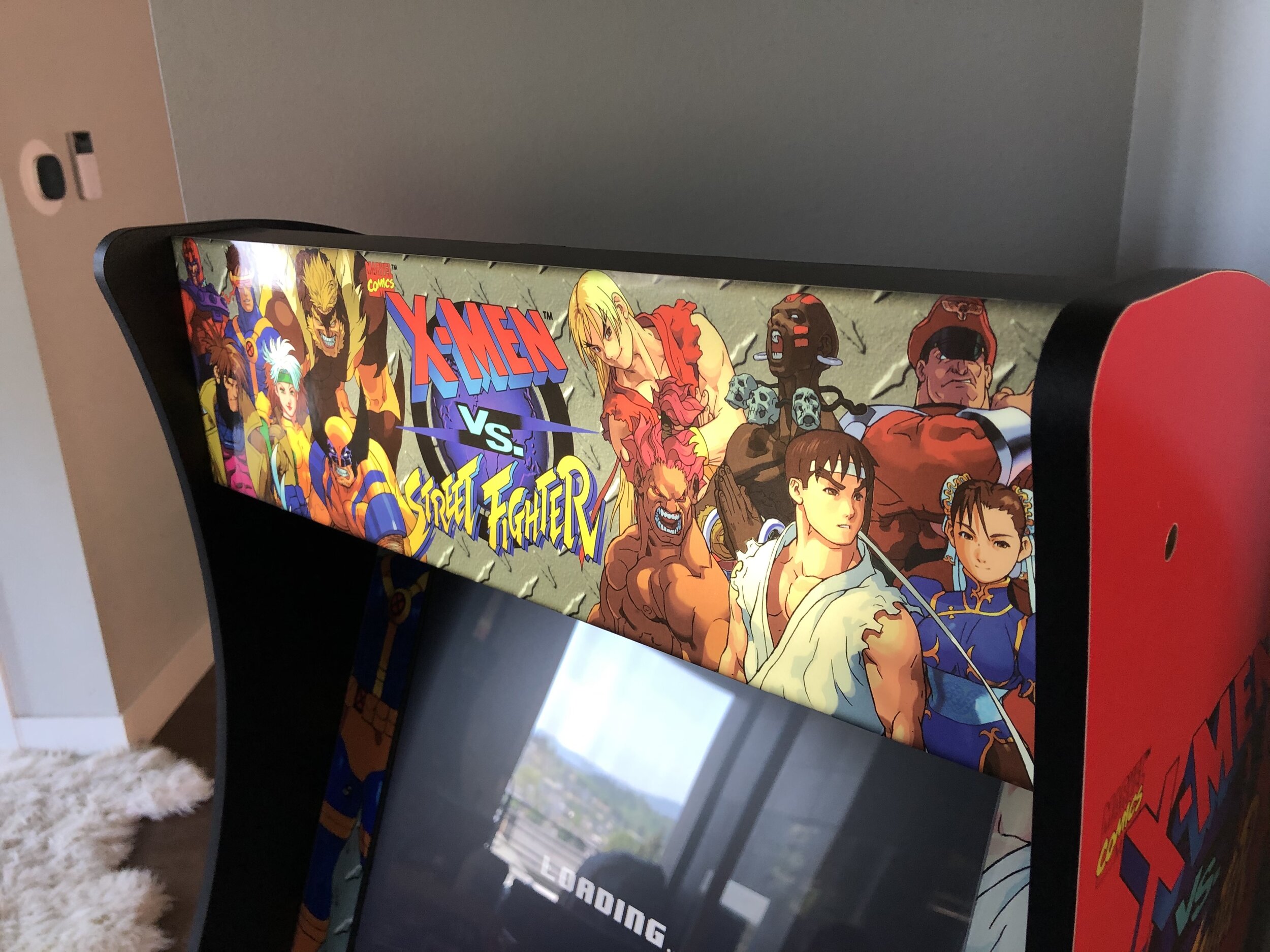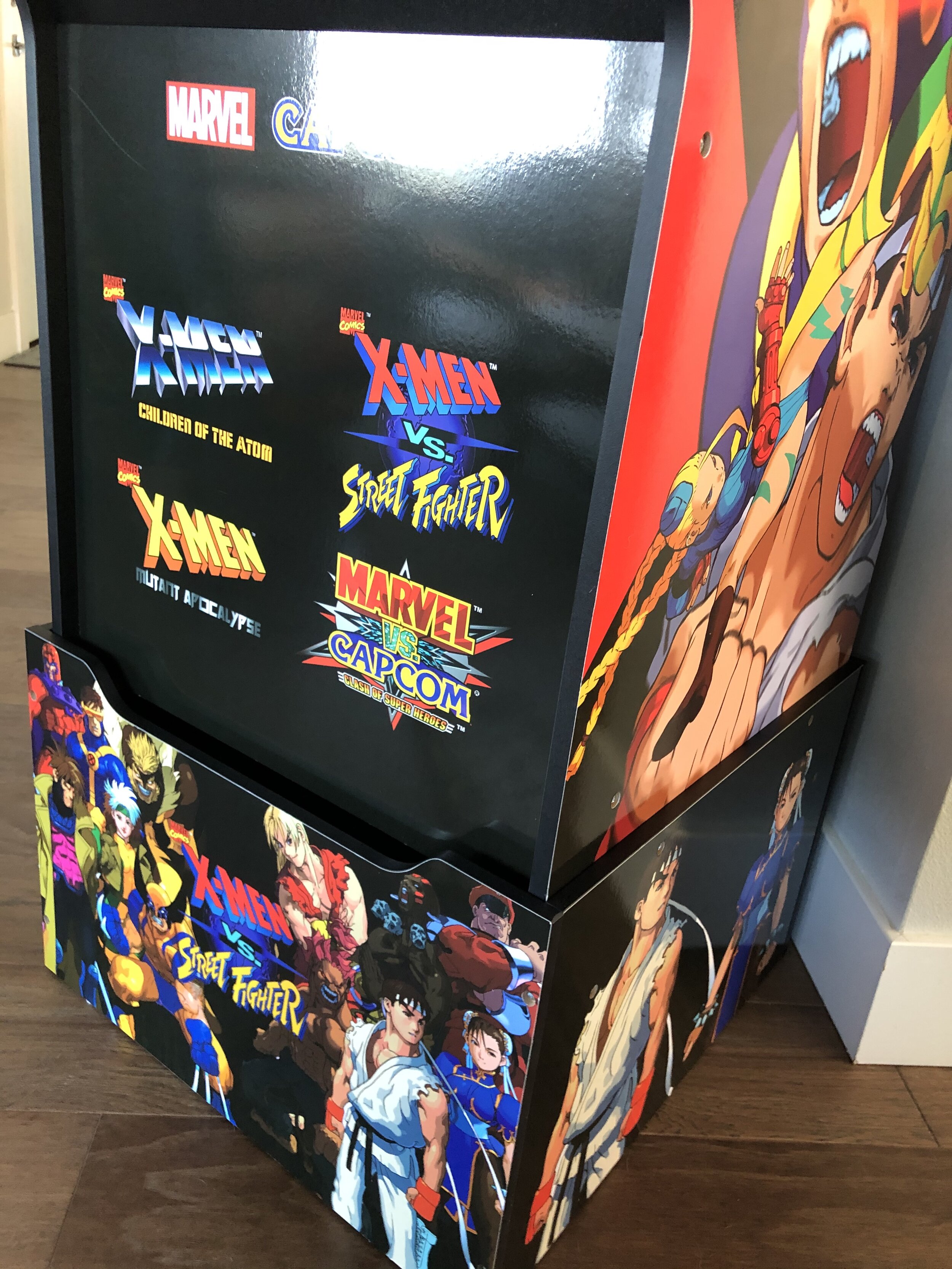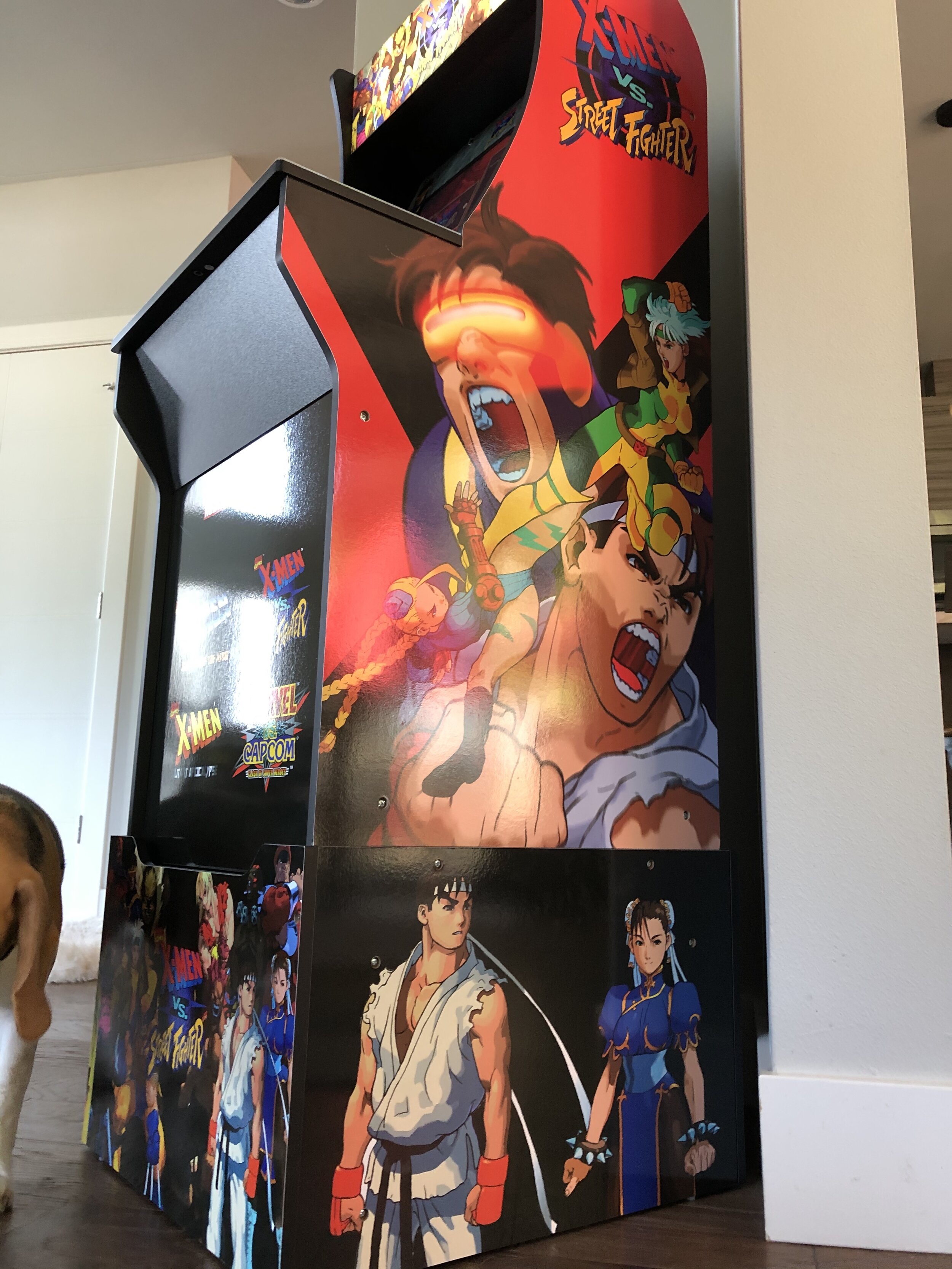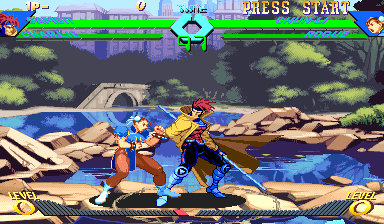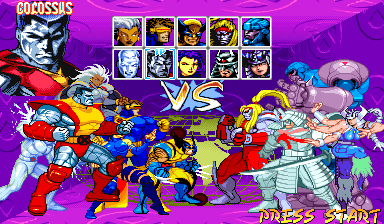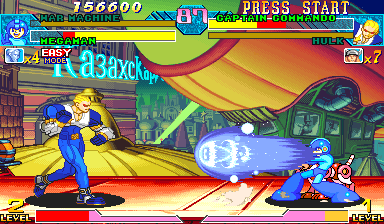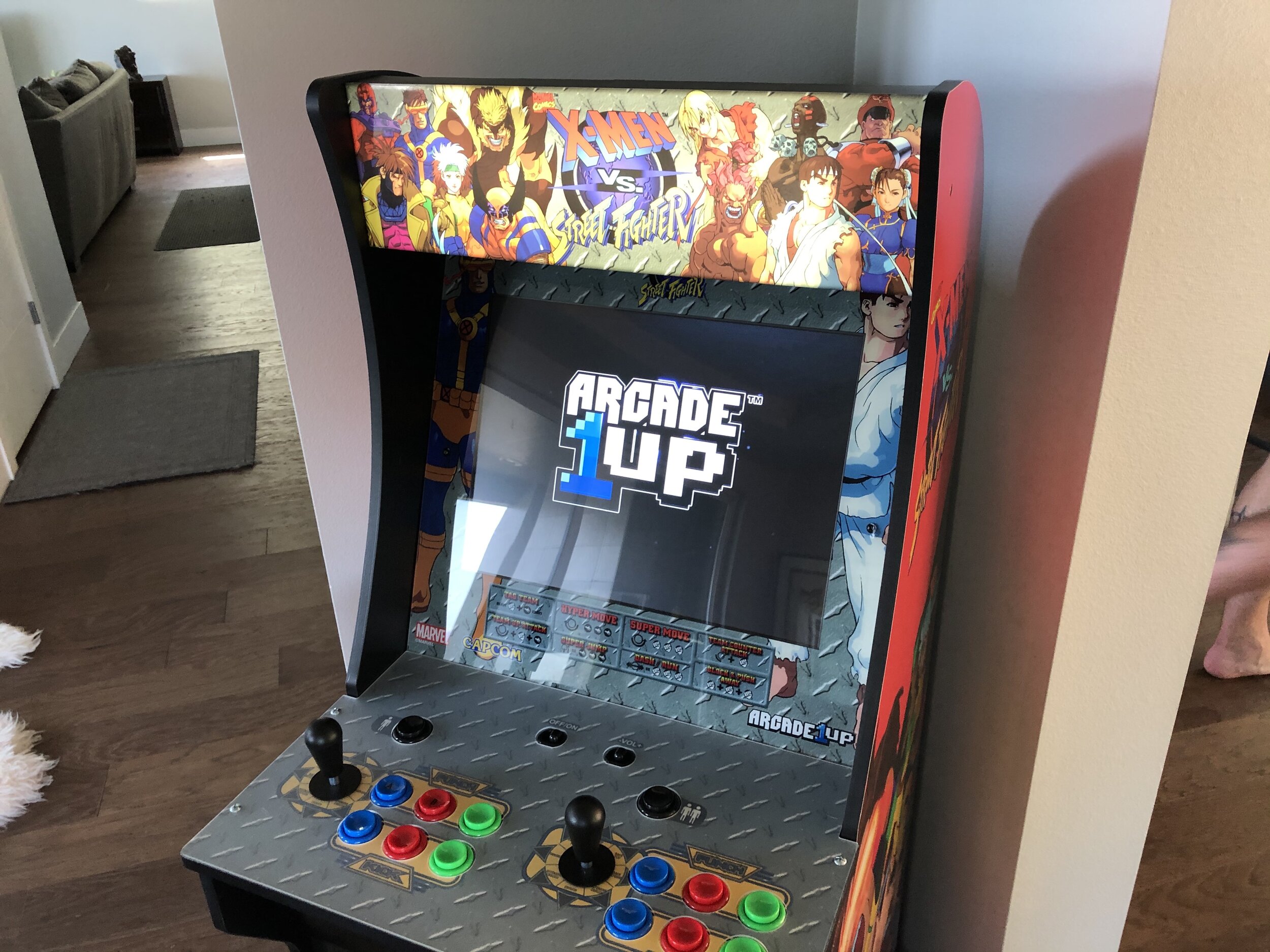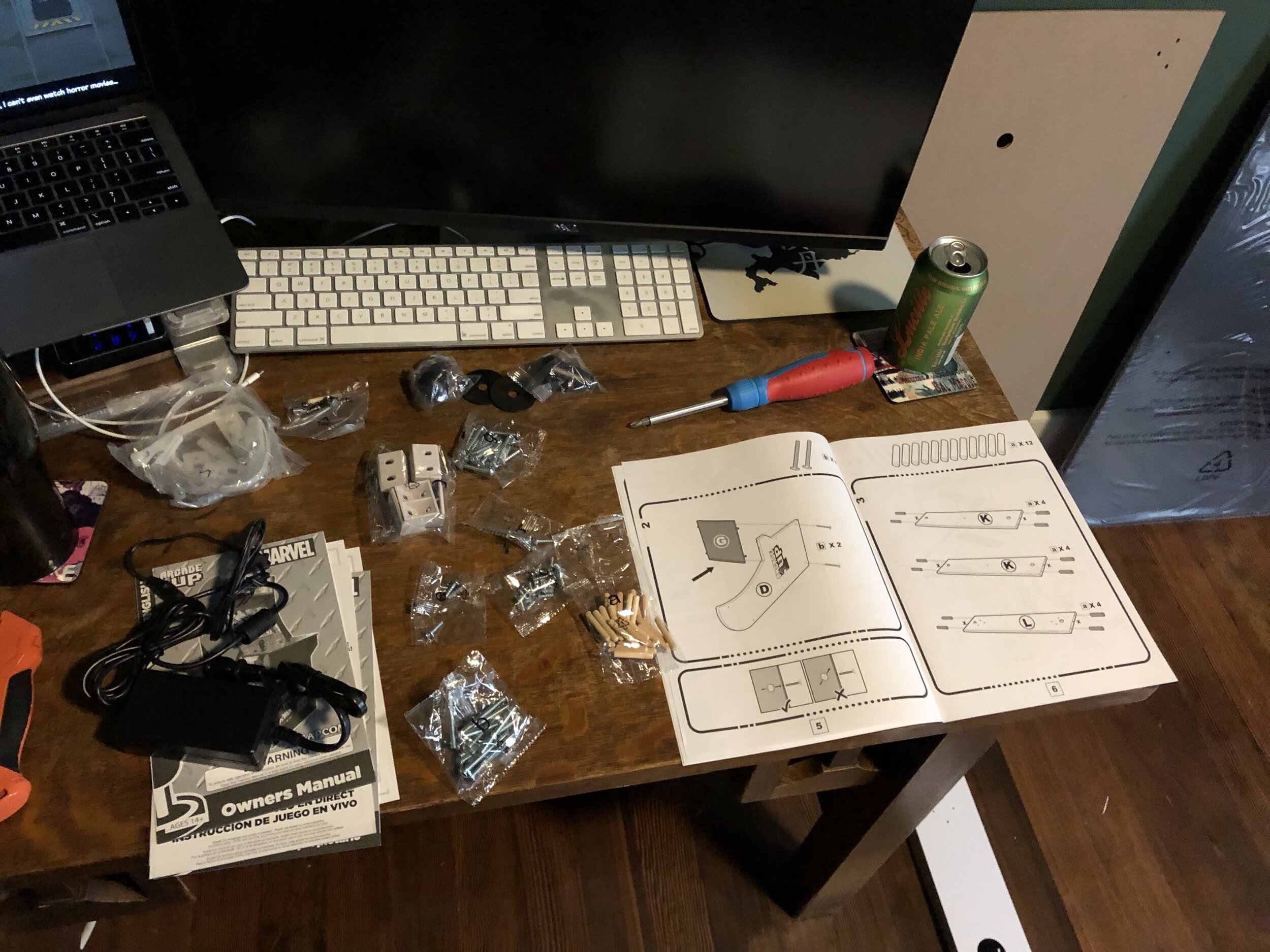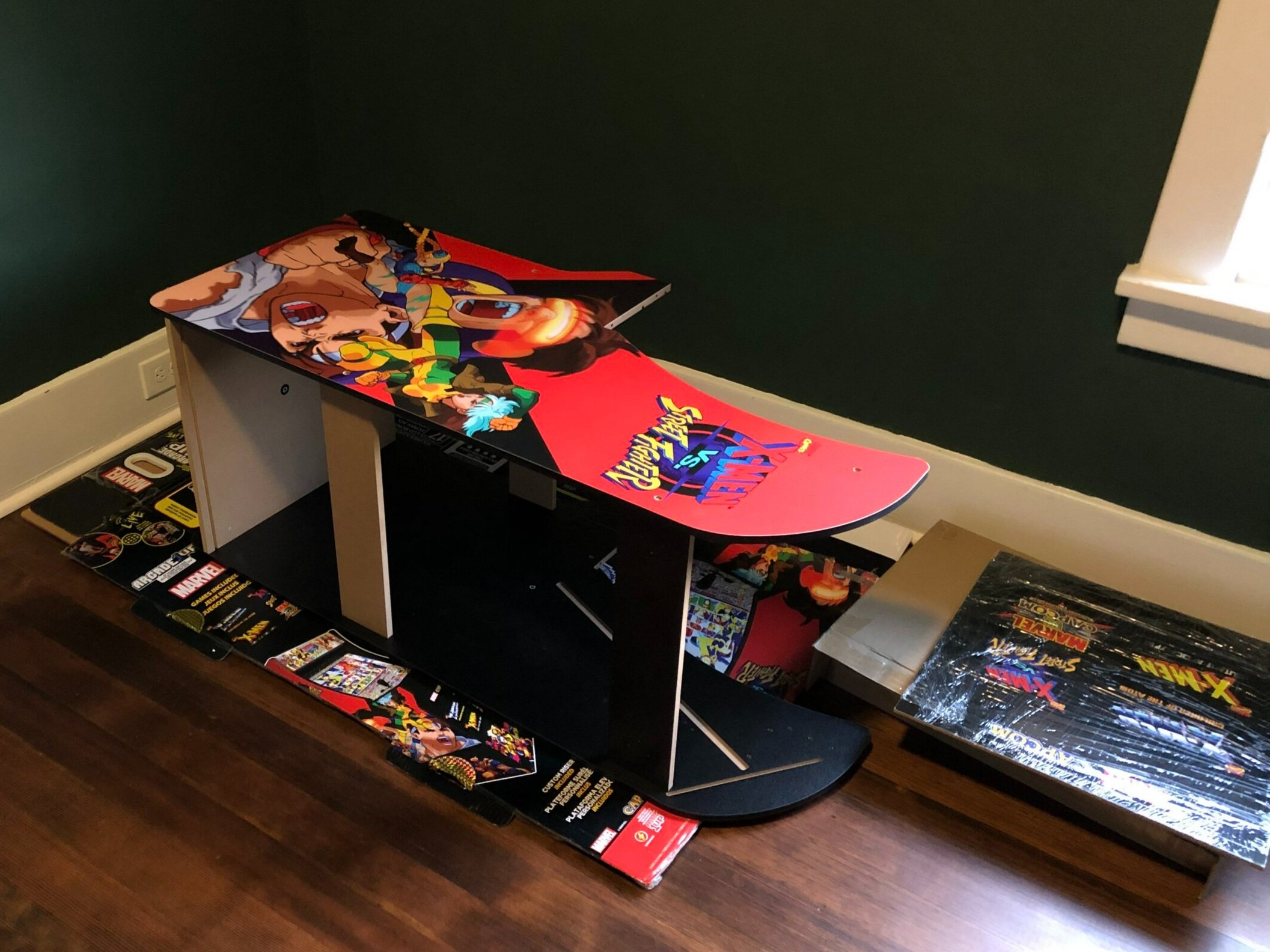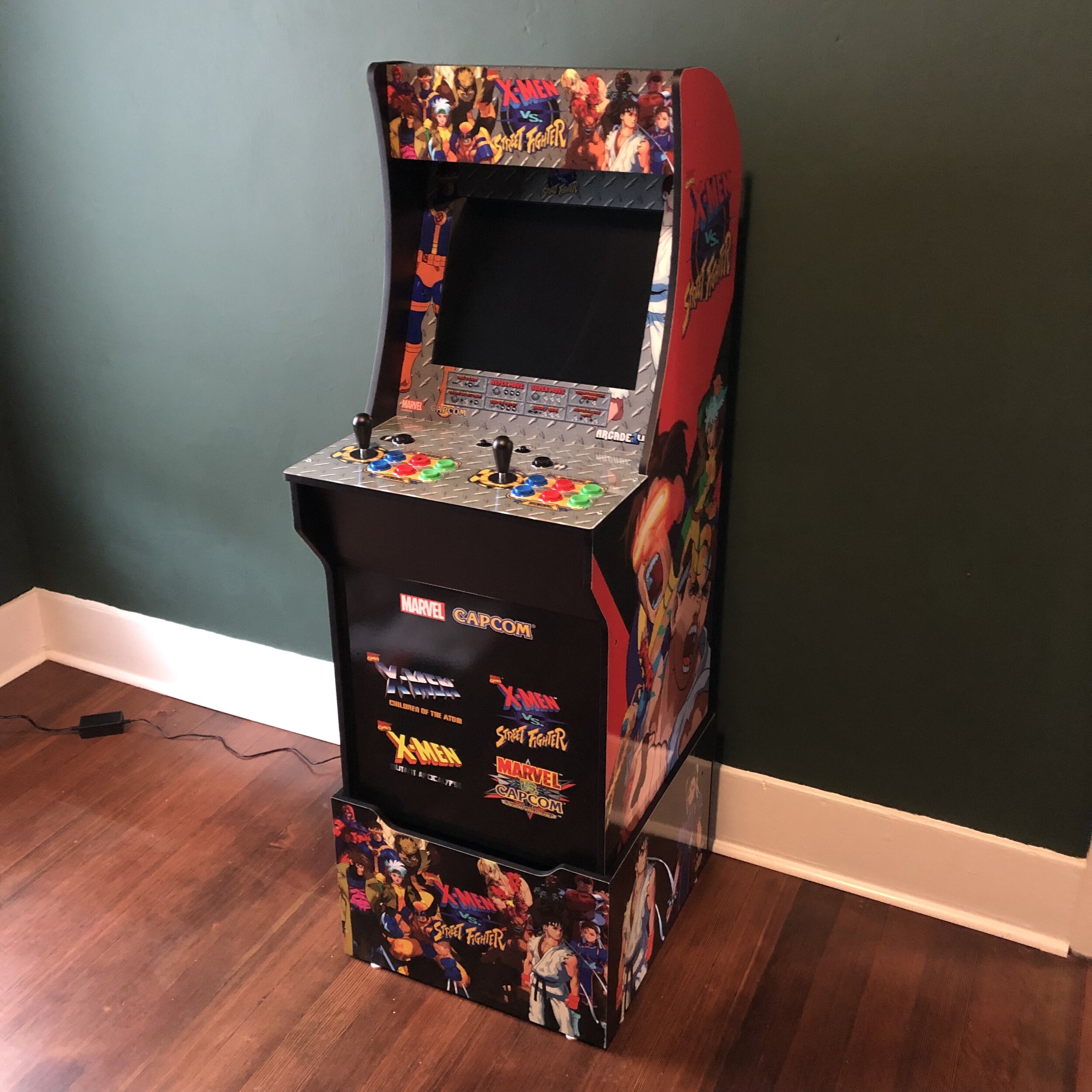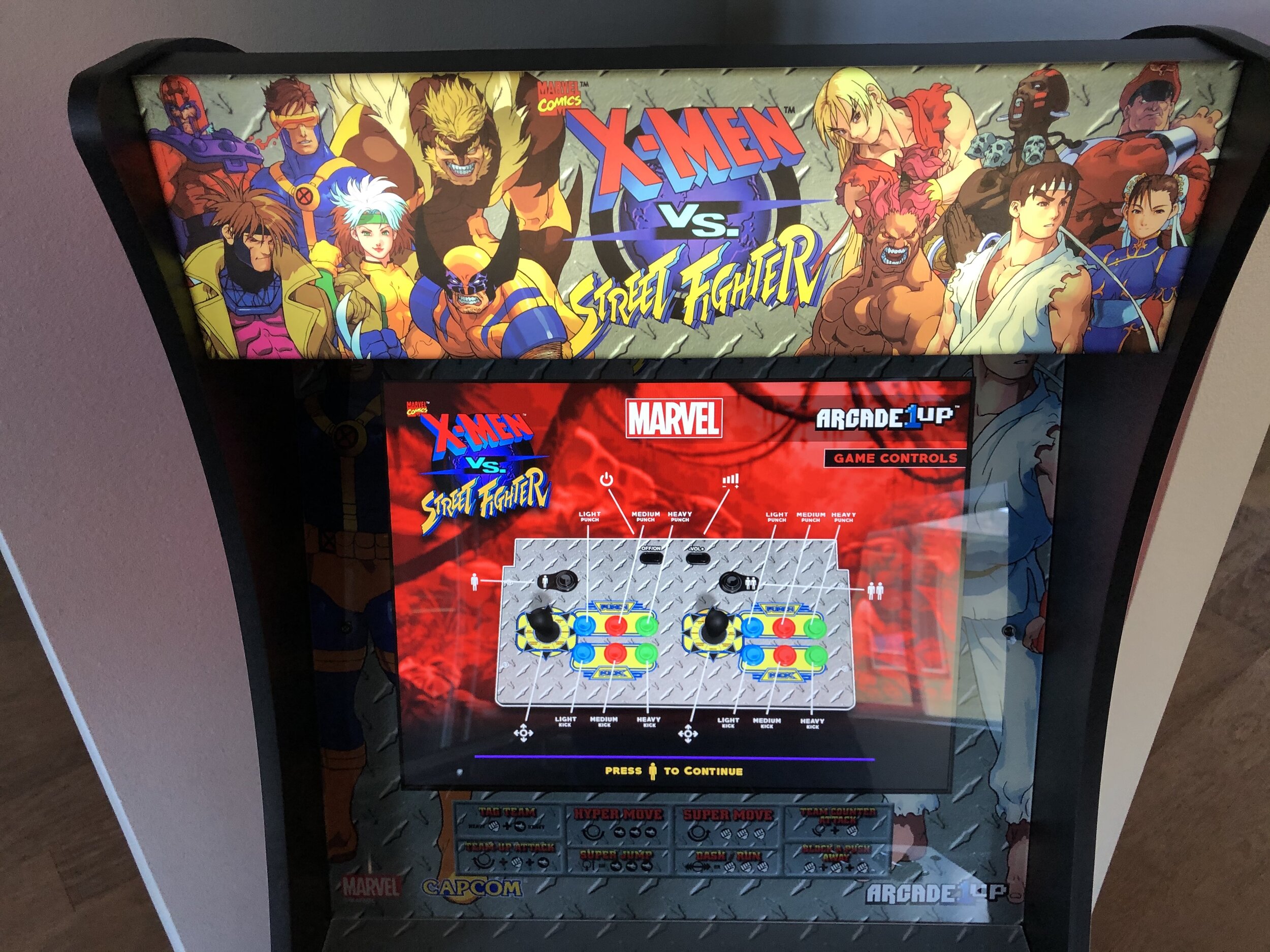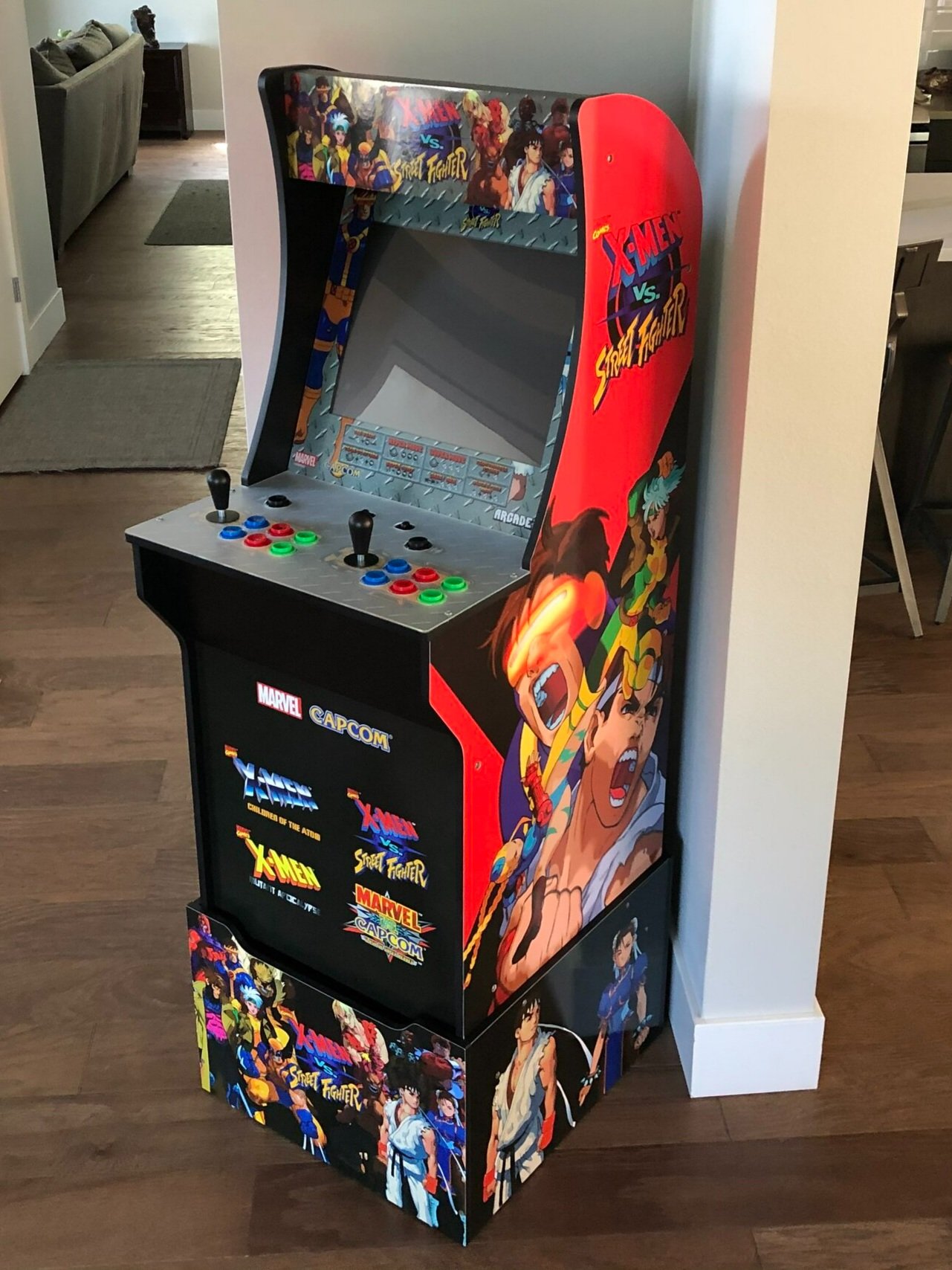Arcade1up cabinet review | X-Men vs. Street Fighter
As readers of this blog will no doubt already know—and thanks again for taking the time, Dad!—I am a big fan of the X-Men (or at the very least, I was in the 90’s), and I am a big fan of Street Fighter. When these two properties came together for the masterpiece mashup of X-Men Vs. Street Fighter, it blew my teenage mind.
To this day, XMvSF remains probably my favorite arcade game of all time, and I also love arcade games! So when Arcade1up announced that they were making an XMvSF cabinet that I could put in my home, I knew I had to get it.
I was so sure I had to get it, in fact, that I actually purchased the thing before I had any space in which to put it. My wife and I were living in a downtown condo at the time, you see, with only like 510 sq ft to work with. There was absolutely no place to fit an arcade cabinet in our unit, even one of the not-actually-full-size Arcade1up variety. So initially after acquiring it, the device remained in its box, slipped snugly under the living room sofa.
It remained in-box for months, until we eventually moved to a house, and I finally had space to assemble the thing. Funnily enough, the fact that a single-family home would provide enough room for me to get my arcade cabinet assembled was one of the stronger motivators for me to want to move. (And yeah, I fully admit that.)
Let’s take a look at this. Arcade1up’s XMvSF machine includes four games, two of which we’ve already reviewed on this very website:
Marvel Vs. Capcom: Clash of Super Heroes
X-Men: Children of the Atom
The main attraction here is X-Men Vs. Street Fighter, the original badass video game crossover. For more in-depth thoughts on this game, check out our review from last year.
While three of these titles are six-button fighting games, X-Men: Mutant Apocalypse is actually a side-scrolling adventure game, originally released for the Super Nintendo. It’s an old favorite of mine that made for a pleasant surprise. Though playing it with an arcade joystick instead of a SNES controller is less than ideal. Check out our full review of the SNES game here.
X-Men: Children of the Atom was the first Marvel fighting game Capcom developed, and it was a lot wilder than their Street Fighter titles of the time. Everything was meant to be bigger and over-the-top than what had come before. Especially since the characters were outright superhuman, not merely expertly training martial artists. So projectiles were bigger, jumps were higher—hell, some characters could fly!—a super move’s hitbox might take up the whole screen, that kind of thing. And even though the game is quite old, the animations still look amazing today. Spiral’s idle pose alone, with her six hands constantly in motion, is just unreal!
Marvel Vs. Capcom 1 is where you really see Capcom’s developers let their zaniness take the wheel. As the third game in what became the “Vs series” (after X-Men Vs. Street Fighter and Marvel Super Heroes vs. Street Fighter), MvC opened up the roster to include more characters from all corners of Capcom games. This meant that not only were fan favorites like Mega Man and Stryder Hiryu playable, but so were deeper cuts like Captain Commando and Jin from Cyberbots.
MvC also added a third teammate who could assist your tag team in battle, chosen semi-randomly from a pool of otherwise non-playable characters. While Marvel Vs. Capcom 2 would eventually crank every one of these elements up to eleven, MvC feels an excellent time capsule of Capcom at the hight of their 90’s arcade prowess. Also, the stage backgrounds are just gorgeous, arguably more impressive than MvC2’s polygonal fare.
Alright, so as always, let’s sum up Arcade1up’s XMvSF cabinet in the same three areas we always do: price, ease of setup, and quality of experience.
Price
The suggested retail price for this cabinet is $549.99. That’s pretty damn expensive, if you ask me, though still within the realm of plausibility for a rad collector’s item. If you're a big fan of XMvSF in particular, it might be worth it for you. This is because the art on the outside of the cabinet itself is a large part of the product’s appeal.
Alternatively, if you more preferred another game, like say Marvel vs. Capcom, then you’d probably want to grab the Arcade1up cabinet branded specifically for that title. (That unit also comes with five games instead of four, including the same two games you’re likely to play the most here, so it could easily be argued to be the better option.)
In my case, I paid $385.00 to buy XMvSF on sale. My order had free shipping, which is fortunate because the box is quite a beast! At nearly 2ft by 4ft and weighing 86lbs (according to the delivery sheet), this is not a box you’ll want to try carrying solo. (I mean, I carried it by myself, sure, but I was really motivated.)
Ease of Setup
X-Men…Assemble!
(That’s the reference, right?)
A friend of mine also bought the XMvSF cabinet, as well as Arcade1up’s Marvel Super Heroes machine sometime before that. Thanks to this, I’ve been able to put together the Arcade1up versions of Capcom fighting game cabinets on three separate occasions. So at this point, I feel pretty confident in my assessment of the process, and it’s generally pretty easy.
Short version:
It’s quite easy to put together, it just takes some time to do. All you’ll need is a Phillips-head screwdriver and a cold beverage of your choice. Then just follow the directions.
The main obstacle is to avoid scratching the finishes on your side panels while assembling this thing. The left and right panels are particularly big and beautiful, but one careless slip-up with the screwdriver could leave a noticeable blemish on the artwork. Also getting pieces into the right position to screw everything together can be challenging, especially if you’re not working on a carpeted floor. I definitely recommend having a second person there, if only to hold pieces in place as you get them secured.
As for the electronic components, it’s really only the screen, the speakers and a light-up marquee (which connect right into one another), and then the control base—housing the joysticks and buttons—that actually runs the whole show. Getting all the wood pieces screwed together is more of a challenge than plugging the electronic together, with a lot more room to misread the directions and make a mistake.
Then there’s the base/stand for the cabinet, which involves, basically, just making a wooden box. Once complete, you place the cabinet on top and secure it to the base by driving screws right through into the cabinet’s side panelling. Now this part made me wince a bit because, again, I really love the artwork on this machine. And although the area you’re screwing into is at the bottom of the cabinet—and not even visible behind the top of the base—it just pains me to drive metal straight into it.
Once everything is put together, just switch it on and it’s basically ready to go. If you connect to your local wifi, it will probably download a firmware update, which is nice as well.
All in all, assembling your Arcade1up cabinet might take a couple hours, but it isn’t difficult. The process is pretty straightforward and not challenging in the technical sense.
Quality of Experience
Once assembled, the XMvSF cabinet works great. Arcade1up’s UI looks good and gets the job done well enough. Menus are navigated via the joystick, with LP acting as the OK button and MP serving as the Back/Cancel button. (Which makes sense, because I believe Capcom arcade boards label these as Button 1 and Button 2.)
The menus use appropriately 90’s-sounding X-Men music, and there are punch/kick sound effects to punctuate your selections—which is almost a little too cute. When you select a game to play and press the Start button to confirm, Wolverine’s unmistakable voice chimes in to growl, “Let’s go, bub!” Then, if you choose to cancel out of a game and return to the main menu, you’ll hear Magneto say, “Playtime is ended.”
While the machine’s volume can be adjusted up and down, I’ve found that even the lowest volume setting is a bit too loud. Like, I don’t think I could play with the sound on even Level-1 if my wife is trying to sleep in the next room; it will definitely be audible. Though I suppose higher volumes kind of makes sense for an arcade cabinet, which traditionally would be vying for your attention (and quarters) by being as loud and flashy as possible. You simply can’t compete with a noisy pinball machine by restricting your volume to moderate levels. Still, since volume has a dedicated switch on the control board, it’d be nice if there was a wider range between the min & max settings.
If you connect to wifi and go to play against others online, you’ll need to provide an email address to Arcade1up for agreeing to their Terms of Use. Then you can establish a username, and the system will randomly assign a piece of character art to use as your profile picture. (Serendipitously, it assigned me a Gambit image, which was exactly what I would have selected for myself.)
After playing a few rounds online, I’m happy to report that I didn’t notice any lag or obvious connection issues. Although, I was just being roundly trounced by my opponent, so perhaps I might have missed something. Online play isn’t really the biggest selling point for me, to be honest. I’m just not good enough at these games—especially when playing with arcade stick controls—to be competitive. So going online for me just means getting absolutely bodied by total randos over and over again. That said, the connection did seem pretty stable, much better than I’d anticipated.
Let’s wrap this up…
All things considered, I am very happy with Arcade1up’s XMvSF cabinet. Having this game playable at home, in all its arcade glory, is really a dream come true. (And having the other three games is just icing on the nostalgic cake!)
I mean, sure—I could easily emulate these games and play them on my TV with a Raspberry Pi. But that would be a somewhat different experience. Actually having the physical cabinet in the house—with its authentic controls, lovely light-up marquee, and just-plain-kickass artwork adorning the sides—is a genuine delight. It’s also become a frequent topic of conversation during my Zoom calls for work, as it really stands out in my otherwise undecorated office.
And strangely, despite being a nostalgia product primarily aimed at 40-year-olds, I’m happy to report that kids absolutely love it! I’ve seen children as young 2½ pull up a chair to stand on, and jump into a match. Sure, kids that young don’t really grasp how the controls are supposed to work, but they still seemed enchanted. My nieces and nephew definitely enjoyed playing multiple games, despite not recognizing hardly any of the characters.
Against the odds, it would appear there’s something magical about the old arcade format; an appeal that transcends generations. The quarter-munching arcade giants of yesteryear hold just as much potential to entertain the masses and divert the youths’ attention today as they did more than two decades ago. And unlike the mobile/touchscreen game equivalents which the youngins end up glued to today, this thing is actually fun.

